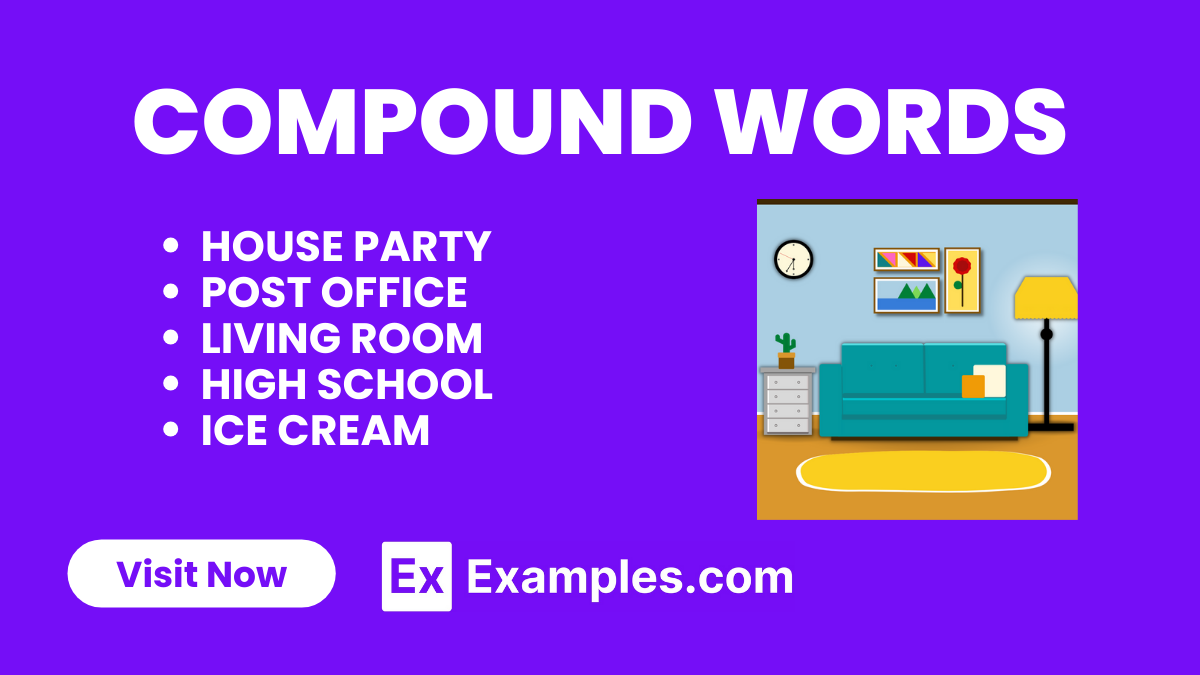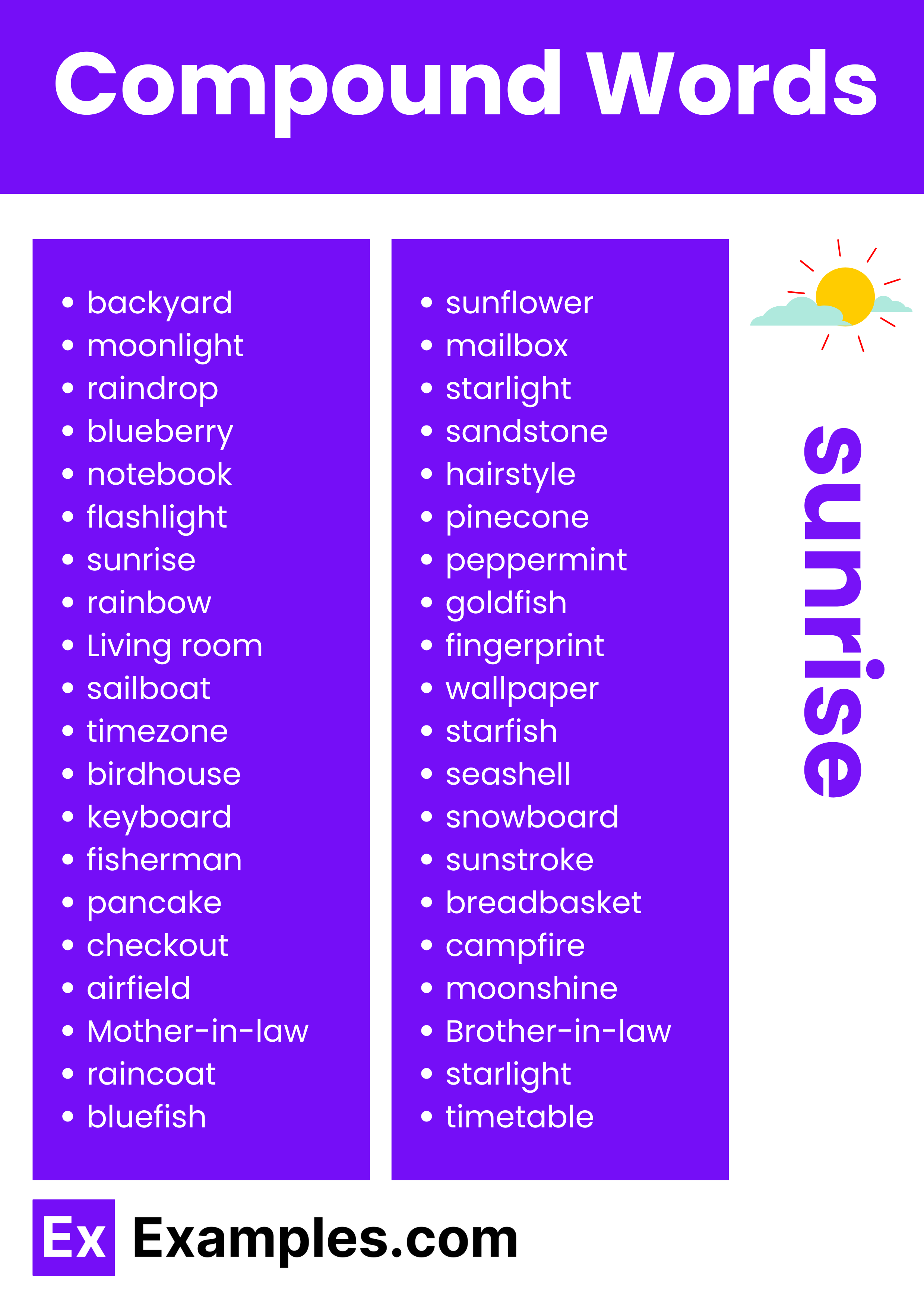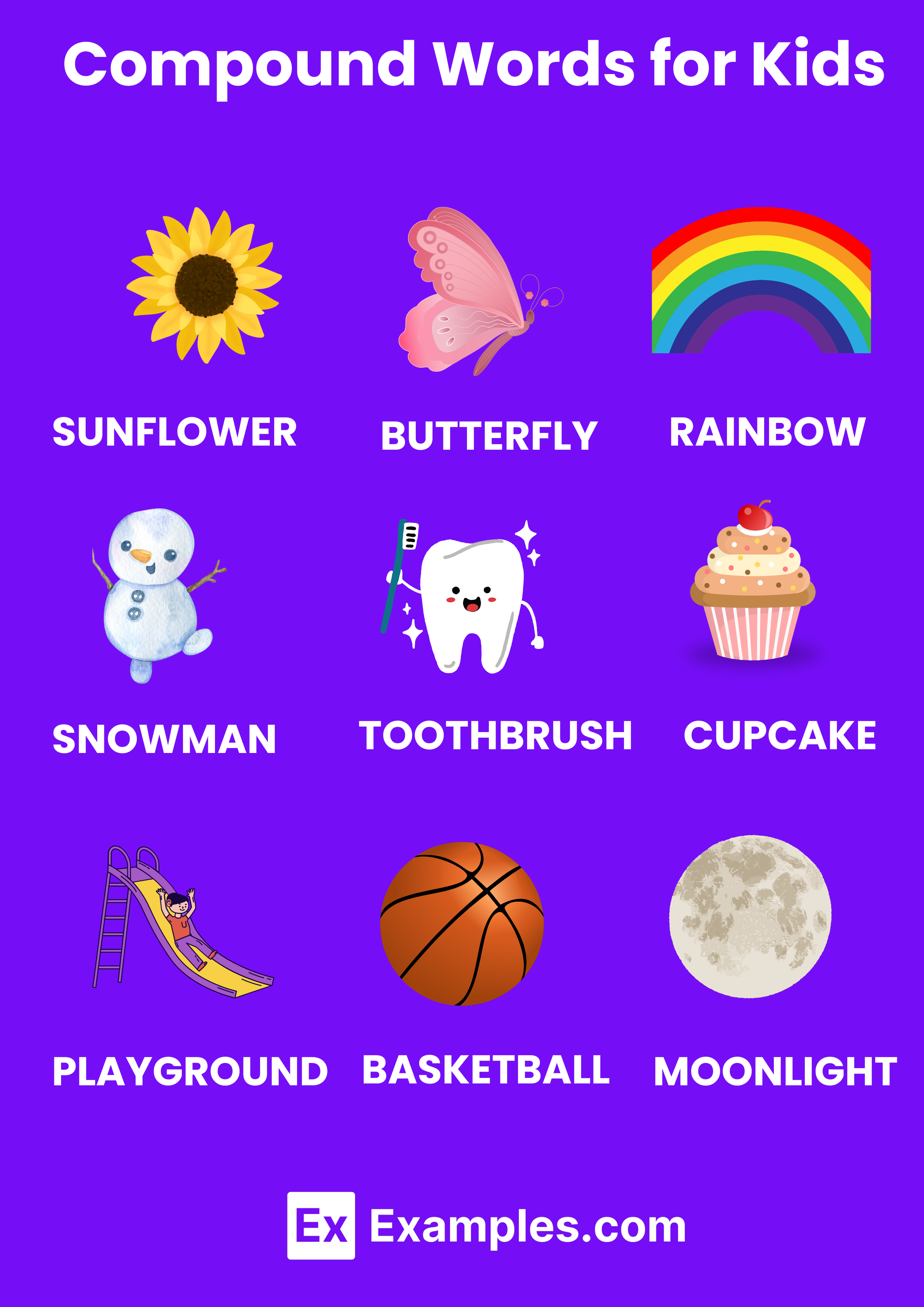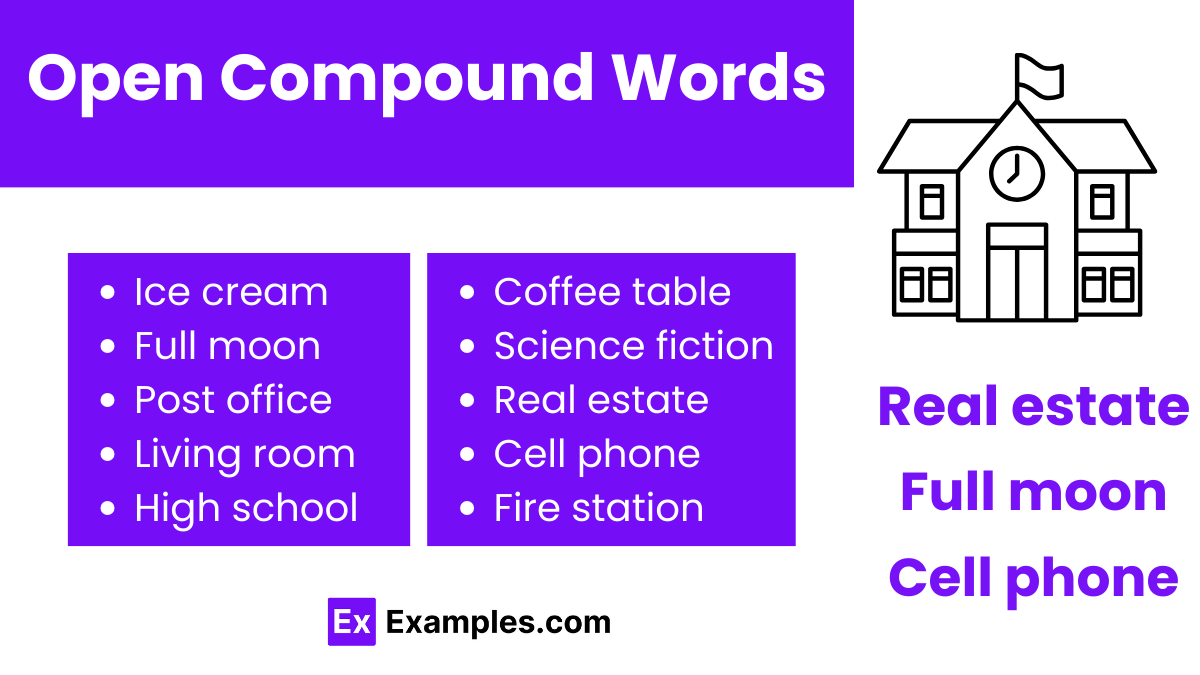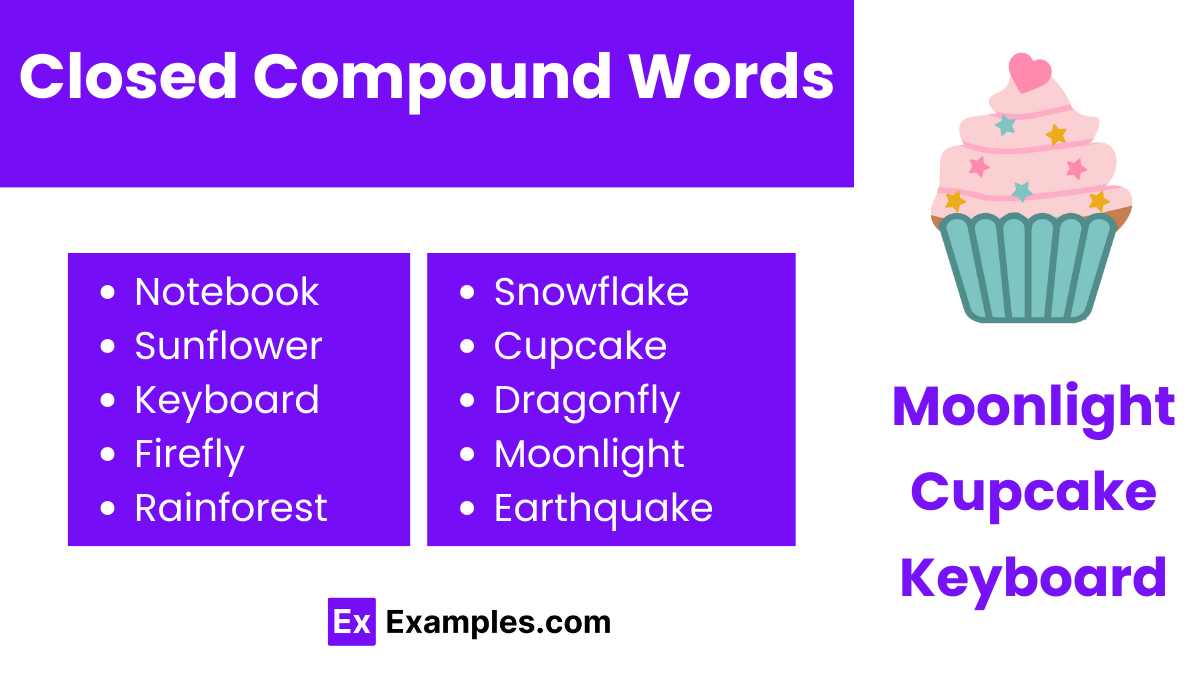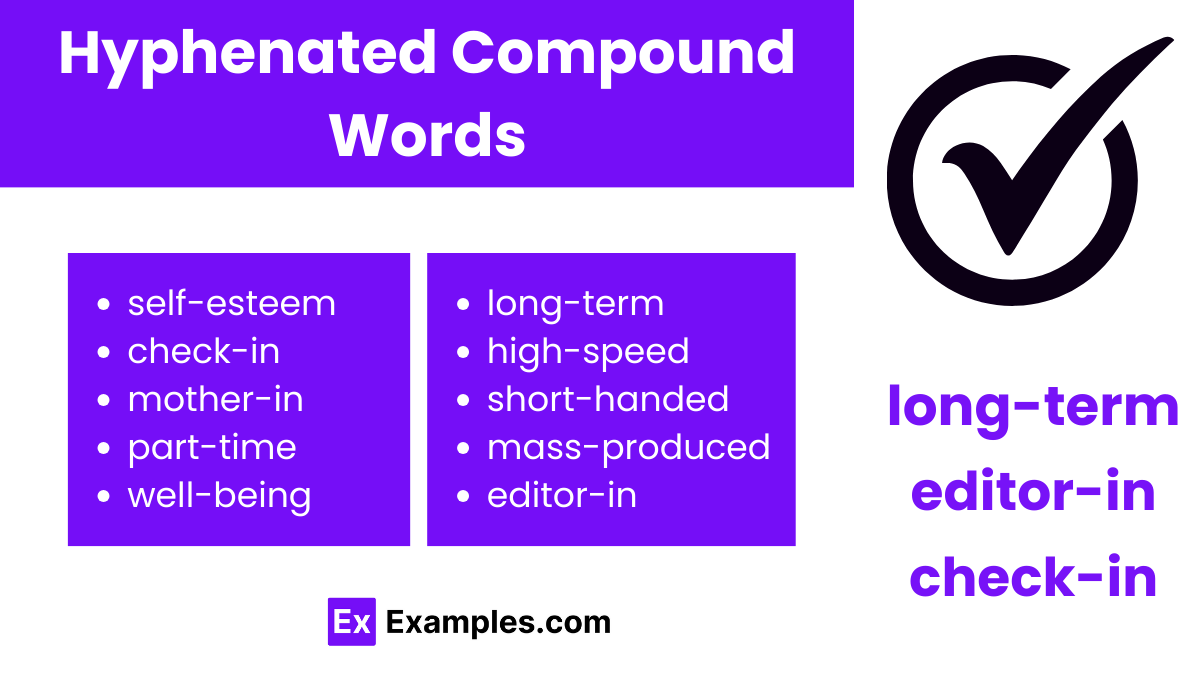450+ Compound Words List, Meaning, PDF
Compound words play a crucial role in the English language, serving as the building blocks that enrich our vocabulary and communication. These words, formed by combining two or more words to create a new word with its own unique meaning, offer a fascinating glimpse into the evolution of language. From everyday items to complex concepts, compound words cover a broad spectrum of categories, making them an essential study area for students and language enthusiasts alike. Understanding and mastering the use of compound words can significantly enhance one’s ability to express ideas more succinctly and vividly. Whether it’s through reading, writing, or engaging in wordplay, exploring compound words can be both an educational and enjoyable experience.
Most Commonly used a Compound Words - PDF
Most Commonly used a Compound Words
Compound words hold a unique place in the English language, offering a fascinating glimpse into the way our vocabulary evolves and adapts. These words, formed by combining two or more words, can significantly enrich one’s understanding and use of the language. From everyday conversations to academic texts, compound words permeate all aspects of English, making them an essential subject of study for students, writers, and language enthusiasts alike. This exploration into compound words not only enhances one’s linguistic skills but also provides insight into the cultural and historical contexts from which these words emerge.
| backyard | basketball | toothpaste | sunflower | butterfly | bookshelf |
| moonlight | skateboard | greenhouse | mailbox | fireworks | snowflake |
| raindrop | sunglasses | toothbrush | starlight | footprint | handcuffs |
| blueberry | jellyfish | earthquake | sandstone | waterfall | dragonfly |
| notebook | crosswalk | thunderstorm | hairstyle | strawberry | playground |
| flashlight | landscape | scoreboard | pinecone | blackboard | masterpiece |
| sunrise | hairstyle | blueprint | peppermint | milestone | heartbeat |
| rainbow | snowstorm | brainstorm | goldfish | moonbeam | sunburn |
| Living room | Swimming pool | Blood pressure | fingerprint | lighthouse | crossroad |
| sailboat | butterfly | handcuff | wallpaper | jellybean | skateboard |
| timezone | footprint | grandparent | starfish | stopwatch | blueprint |
| birdhouse | sunshade | thundercloud | seashell | cupcake | spacecraft |
| keyboard | firefly | waterfall | snowboard | earring | toothpick |
| fisherman | sandbox | landmark | sunstroke | headlight | overcoat |
| pancake | moonwalk | blackberry | breadbasket | rainforest | skateboard |
| checkout | pine tree | dragonfly | campfire | keyhole | nightfall |
| airfield | dustbin | flashlight | moonshine | earthworm | sailboat |
| Mother-in-law | Father-in-law | Sister-in-law | Brother-in-law | Granddaughter | snowman |
| raincoat | warehouse | butterfly | starlight | crosswalk | headband |
| bluefish | jellyroll | Nose ring | timetable | bookend | daybreak |
Compound Words for Kids
Introducing compound words to kids is a pivotal step in language development, serving to expand their vocabulary and enhance their understanding of how words can be combined to convey new meanings. Compound words, by their nature, are a fusion of two or more words that create a new term with its own distinct definition. This concept is not only fundamental in learning the intricacies of the English language but also in sparking creativity and imagination in young minds. By exploring compound words, children can explore the playful side of language, seeing how different words come together to describe objects, actions, or concepts in their world.
- Sunflower – A tall plant with a large, bright yellow flower that resembles the sun.
- Butterfly – A colorful insect with large wings that flies during the day.
- Rainbow – An arc of colors visible in the sky, caused by the refraction of the sun’s light by rain.
- Snowman – A figure made of snow, typically resembling a human, decorated with items like rocks, carrots, and clothing.
- Toothbrush – A brush used to clean the teeth.
- Cupcake – A small cake designed to serve one person, often baked in a small, thin paper or aluminum cup.
- Playground – An outdoor area provided for children to play in, especially at a school or public park.
- Basketball – A game played between two teams where goals are scored by throwing a ball through a netted hoop fixed at each end of the court.
- Moonlight – The light that comes to Earth from the moon.
- Firefighter – A person whose job is to extinguish fires
Types Compound Words
Compound words can be formed in three different ways. They are:
- Open compound words
- Closed compound words
- Hyphenated compound words
Open Compound Words
Open compound words are an intriguing aspect of English linguistics, bridging the gap between vocabulary expansion and the fluidity of language usage. These compounds, consisting of two or more words used together as a single noun, verb, or adjective, are written with space between them, unlike their closed or hyphenated counterparts. Open compound words are pivotal for students, educators, and content creators, offering a gateway to explore the nuances of English. They enrich texts, making language more descriptive and engaging.
- Ice cream – A frozen dessert made from cream or milk and sugar, often flavored.
- Full moon – The phase of the moon when it is fully illuminated as seen from Earth.
- Post office – A public department responsible for mail services and postal communications.
- Living room – A room in a house for general and informal everyday use.
- High school – An institution that provides secondary education, typically for students aged between 14 and 18.
- Coffee table – A low table typically placed in a living room, used for convenient placement of drinks, books, or decorative objects.
- Science fiction – A genre of speculative fiction dealing with imaginative concepts such as futuristic science and technology, space exploration, time travel, and extraterrestrial life.
- Real estate – Property consisting of land and the buildings on it, along with its natural resources.
- Cell phone – A portable telephone that can make and receive calls over a radio frequency link while the user is moving within a telephone service area.
- Fire station – A building where firefighters and their equipment are stationed, ready to extinguish fires and respond to other emergencies
Closed Compound Words
Closed compound words are a fascinating element of the English language, where two or more words are combined to form a single term without spaces or hyphens between them. This linguistic feature enriches our vocabulary by blending concepts and meanings, creating new, distinct words. Closed compounds play a pivotal role in English communication, offering a unique challenge and opportunity for learners and educators alike. They are essential for students aiming to enhance their language proficiency, as understanding these words can significantly impact reading comprehension and writing clarity. From “notebook” to “sunflower,” closed compound words are everywhere, seamlessly integrating into our daily conversations and writings.
- Notebook – A book of blank or ruled pages for writing notes in.
- Sunflower – A tall plant with large yellow flowers that produce edible seeds.
- Keyboard – A panel of keys that operate a computer or typewriter.
- Firefly – A small insect that produces light from its abdomen during twilight.
- Rainforest – A dense, tropical forest that receives a lot of rain throughout the year.
- Snowflake – A flake of snow, especially a feathery ice crystal.
- Cupcake – A small cake baked in a cup-shaped container and typically iced.
- Dragonfly – A fast-flying long-bodied insect with two pairs of large transparent wings.
- Moonlight – The light of the moon.
- Earthquake – A sudden and violent shaking of the ground, sometimes causing great destruction, as a result of movements within the earth’s crust or volcanic action.
Hyphenated Compound Words
Hyphenated compound words are a unique and integral part of the English language, serving as a bridge between simple vocabulary and complex expression. These words, characterized by the hyphen that combines two or more words into a single entity, enhance clarity, prevent ambiguity, and enrich language comprehension. They are particularly important in written communication, where precision and conciseness are paramount. Hyphenated compounds can denote a wide range of concepts, from technical terms to everyday phrases, making them indispensable across various contexts including academic writing, creative literature, and professional documentation. Understanding and utilizing hyphenated compound words effectively can significantly elevate one’s writing and speaking skills, offering a more nuanced and sophisticated means of expression.
- Self-esteem – The confidence in one’s own worth or abilities; self-respect.
- Check-in – The act of registering upon arrival, especially at an airport or hotel.
- Mother-in-law – The mother of one’s spouse.
- Part-time – Working or operating for less than the standard or customary time.
- Well-being – The state of being comfortable, healthy, or happy.
- Long-term – Lasting, existing, or effective for a long time.
- High-speed – Designed to operate or operating at a high speed.
- Short-handed – Lacking the usual or necessary number of workers, employees, or assistants.
- Mass-produced – Manufactured in large quantities, typically by machinery.
- Editor-in-chief – The principal editor of a publication, who has the final say on its contents
Formation of Compound Words
Noun + Noun
The formation of compound words through the combination of two nouns is a fascinating aspect of the English language that significantly enriches our vocabulary. This process creates new words that often denote objects, concepts, or entities that are, in essence, a fusion of the two original nouns. Such compounds are integral for precise and nuanced communication, allowing speakers and writers to convey complex ideas with a single term
- Bookshelf – A shelf on which books are stored.
- Sunflower – A tall plant with large yellow flowers that produce edible seeds.
- Firefly – A beetle that produces light from its abdomen during the twilight hours.
- Snowman – A figure made of snow, often decorated with clothes, a carrot nose, and coal for eyes.
- Mailbox – A box into which mail is delivered, typically found at the end of a driveway or near the front door.
- Toothbrush – A brush used to clean the teeth.
- Starfish – A sea creature with five or more arms radiating from a central disk.
- Waterfall – A place where water flows over a vertical drop in the course of a stream or river.
- Keyboard – A set of keys for operating a computer or musical instrument.
- Footprint – A mark left by a foot or shoe on the ground or a surface
Noun + Verb
The formation of compound words through the combination of a noun and a verb is a creative aspect of English language structure, producing words that are both unique and descriptive. Here are several examples of compound words formed from a noun followed by a verb:
- Sunrise – The daily appearance of the sun above the horizon.
- Haircut – The act of cutting the hair, or the style in which hair is cut.
- Rainfall – The quantity of rain that falls in a specific area within a specific period.
- Snowfall – The quantity of snow that falls in a specific area within a specific period.
- Thunderstorm – A storm with thunder and lightning and typically also heavy rain or hail.
- Babysit – To take care of a baby or child while the parents are temporarily away.
- Houseclean – The act of cleaning the interior of a house, especially thoroughly.
- Proofread – To read (text) in order to detect and correct any errors.
- Handwash – To wash something by hand rather than in a machine.
- Dreamcatcher – A small hoop containing a horsehair mesh decorated with feathers and beads, believed by American Indians to give its owner good dreams
Verb + Noun
Compound words formed from a verb and a noun combination are fascinating, as they often result in terms that are widely used in everyday language. These compounds can describe actions, objects, or concepts, bridging dynamic actions with tangible or abstract nouns to create meaningful expressions. Here are several examples of compound words that follow the verb + noun structure:
- Breakfast – The first meal of the day, eaten in the morning (from “break” + “fast”).
- Pickpocket – A thief who steals from the pockets or purses of others in public places (from “pick” + “pocket”).
- Washroom – A room providing facilities for washing; a bathroom or lavatory (from “wash” + “room”).
- Drive-in – A place, such as a restaurant or movie theater, where one can be served while staying in their car (from “drive” + “in”).
- Babysit – To care for children temporarily in the absence of their parents (from “baby” + “sit”).
- Checkout – The process of paying for and obtaining goods from a store, or the place within a store where this process happens (from “check” + “out”).
- Dropkick – A kick performed in certain sports, such as rugby, where the ball is dropped and then kicked as it touches the ground (from “drop” + “kick”).
- Printshop – A place where printing, especially commercial printing, is carried out (from “print” + “shop”).
- Turntable – A circular revolving plate supporting a record as it is played (from “turn” + “table”).
- Jumpstart – To start (a car with a discharged battery) by connecting it to another car’s battery or to start (an activity) with energy and efficiency (from “jump” + “start”).
Verb + Preposition
The formation of compound words through the combination of a verb and a preposition creates unique terms that often function as prepositions or adverbs in sentences. These compound words are pivotal in conveying precise actions or states and enrich the English language with their specificity and conciseness. Here are examples of compound words formed from a verb and a preposition:
- Check-in – The act of registering upon arrival, particularly at hotels or airports.
- Break-in – The act of entering a building or vehicle by force.
- Pick-up – The act of collecting someone or something.
- Take-off – The phase during which an aircraft leaves the ground and begins to fly.
- Sit-down – Intended for a meeting or meal where participants are seated.
- Look-out – To watch carefully for someone or something.
- Turn-off – A road leading off to one side; or something that causes a loss of interest.
- Drop-off – A point where someone or something is left or delivered.
- Run-through – A rehearsal or review of a performance or procedure.
- Write-down – A reduction in the book value of an asset when its is not recoverable
Preposition + Verb
The formation of compound words through the combination of a preposition and a verb is relatively rare in English, but it does occur. These compounds often take on roles different from their original parts, functioning as nouns or adjectives. Here are some examples of compound words formed from a preposition and a verb:
- Undergo – To experience or be subjected to (something, typically something unpleasant or arduous).
- Output – The amount of something produced by a person, machine, or industry.
- Input – What is put in, taken in, or operated on by any process or system.
- Overcome – Succeed in dealing with (a problem or difficulty).
- Overthrow – Remove forcibly from power.
- Undertake – Commit oneself to and begin (an enterprise or responsibility); take on.
- Upkeep – The process of keeping something in good condition; maintenance.
- Withdraw – Take back or away something that has been granted or possessed.
- Upturn – An upward turn or an improvement in situation or condition.
- Offset – Counteract (something) by having an equal and opposite force or effect
Noun + Adjective
The formation of compound words through the combination of a noun and an adjective is not a standard or common pattern in English. Typically, compound words are formed from two nouns (e.g., “toothpaste”), an adjective and a noun (e.g., “blackboard”), or a verb and a preposition (e.g., “takeoff”).
- Snow-white (Adjective + Noun) – Describes something as white as snow, typically used as an adjective.
- Bittersweet (Adjective + Adjective) – Something that is both bitter and sweet at the same time, often used metaphorically to describe experiences.
- Blue-collar (Adjective + Noun) – Describing workers who perform manual labor, often requiring physical work clothes or uniforms.
- Old-fashioned (Adjective + Noun) – Describing something that is from or characteristic of an earlier period, often used to denote traditional or not modern.
- Ice-cold (Noun + Adjective) – Extremely cold, as cold as ice
- Cold-blooded (Adjective + Noun) – Describes animals whose body temperature varies with the temperature of their surroundings, or metaphorically, a person lacking warmth or emotion.
- Steel-gray (Noun + Adjective) – Describing a shade of gray that resembles the color of steel, often used in fashion and design.
- Honey-sweet (Noun + Adjective) – Describes something that is as sweet as honey, often used metaphorically to describe a pleasant sound or disposition.
- Silk-smooth (Noun + Adjective) – Describes a texture that is as smooth as silk, indicating a very fine and smooth quality.
- Night-blind (Noun + Adjective) – Describes a condition where a person has difficulty seeing in low light or at night
Adjective + Noun
The formation of compound words through the combination of an adjective and a noun is a common and effective way to create new terms in English. These compound words often describe a particular type of thing or person, characterized by the adjective part of the compound. Here are several examples:
- Greenhouse – A glass building in which plants are grown that need protection from cold weather.
- Blackboard – A dark surface on a wall or frame, used for writing on with chalk in classrooms.
- Hotdog – A cooked sausage eaten in a sliced bun, often with mustard, relish, or ketchup.
- Whitewash – A solution of lime and water or of whiting, size, and water, used for painting walls white.
- Redhead – A person with red hair.
- Bluestone – A variety of dense, hard stone, often used in building and paving.
- Heavyweight – A boxer or wrestler in the heaviest category.
- Public school – In certain countries, notably the UK, a privately funded school offering high standards of education.
- Silversmith – A person who makes and repairs items in silver.
- Wildlife – Wild animals collectively; the native fauna
Gerund + Noun
The English language is rich with compound words, particularly those formed by combining a gerund (an -ing form of a verb acting as a noun) with another noun. This linguistic structure not only enriches vocabulary but also enhances clarity and conciseness in communication. Understanding the formation of gerund + noun compound words is crucial for effective language use, aiding in both written and spoken English.
- Swimming Pool – A pool designed specifically for the activity of swimming.
- Running Shoes –Shoes specifically designed to enhance and support the act of running.
- Eating Area – A designated space for the activity of eating, such as in a cafeteria or restaurant.
- Drinking Fountain – A fixture designed to provide water for drinking.
- Sleeping Bag – A portable, insulated bag designed as bedding for sleeping, especially outdoors.
- Driving License – An official document certifying that the holder is qualified to drive a motor vehicle.
- Reading Lamp – A lamp designed to provide adequate light for reading.
- Baking Sheet – A flat tray used specifically for baking goods in an oven.
- Fishing Rod – A long, flexible rod used to catch fish.
- Washing Machine – A machine designed for cleaning clothes, linens, and other textiles
Noun + Gerund
Compound words formed by combining a noun with a gerund (a verb ending in -ing used as a noun) are a fascinating aspect of English language structure. These compounds are not only expressive but also enhance linguistic precision, offering a succinct way to convey complex ideas or actions related to the noun. This formation is particularly useful in creating terms that describe objects, activities, or concepts by linking a specific subject with an action.
- House hunting – The activity of searching for a house to buy or rent.
- Window shopping – Looking at goods in store windows without the intention of buying them immediately.
- Dress making – The craft or activity of making dresses.
- Trouble shooting – The process of solving problems or determining the cause of operating errors.
- Dog walking – The act of taking a dog for a walk, typically as a job.
- Train spotting – The hobby of observing trains and noting details about them.
- Road running – The sport or activity of running on roads, as opposed to track running or cross-country running.
- Snow boarding – The sport or activity of descending snow-covered slopes on a snowboard.
- Book binding – The process of physically assembling a book from an ordered stack of paper sheets.
- Voice training – The practice of improving the quality of one’s voice for singing, speaking, or other purposes
Preposition + Noun
Combining a preposition with a noun is a powerful tool in the English language for creating compound words. This technique not only expands the lexicon but also enables more precise and nuanced expressions. Such compounds frequently capture complex ideas or objects in a single term, enhancing both written and spoken communication.
List of Preposition + Noun Compound Words
- Overcoat – A long coat worn over other clothes for added warmth.
- Underground – Below the earth’s surface, often used to describe subways or hidden activities.
- Aftertaste – The flavor that lingers in the mouth after something is eaten or drunk.
- Bypass – A road built around a town or other obstruction to provide an alternative route.
- Onset – The beginning or start of something, often used in the context of diseases or events.
- Upkeep – The process of maintaining or preserving someone or something in good condition.
- Outcome – The result or effect of an action, situation, or event.
- Input – The information or material provided or inputted into a system.
- Offspring – The children or young of a person, animal, or plant.
- Underbelly – The vulnerable area or aspect of something, often hidden or less visible
Understanding and utilizing compound words, especially those formed from gerunds, prepositions, and nouns, significantly enriches our language and communication. These compounds offer concise, vivid ways to express complex ideas, enhancing clarity and precision. Mastering their use not only broadens one’s vocabulary but also sharpens linguistic skills, making communication more effective and nuanced



